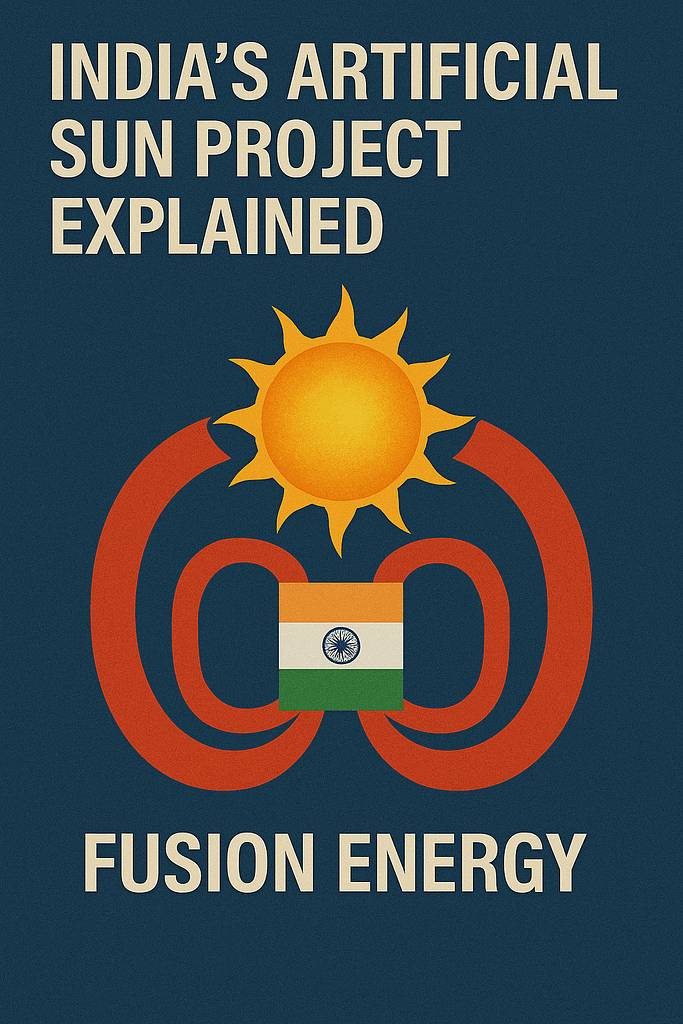
New Delhi, May 6, 2025 — India just took a giant leap in the clean energy race with its ambitious “Artificial Sun” project — and yes, it’s exactly as sci-fi and exciting as it sounds. The goal? To mimic the way the actual Sun powers itself, but do it right here on Earth.
Fusion Energy: Not Just a Dream Anymore
Led by the Institute for Plasma Research (IPR) in Gujarat, the project is India’s big bet on nuclear fusion — the same kind of reaction that happens in the core of the Sun. It’s clean, insanely powerful, and doesn’t leave behind dangerous radioactive waste like the nuclear power we know today. In short, it’s the kind of energy that could totally change the game.
India’s Big Role in the World’s Biggest Fusion Experiment
Here’s something cool: India isn’t doing this alone. We’re also a key part of ITER, a massive international fusion experiment in France that’s bringing together top scientific minds from all over the world. India’s contribution? Some of the most critical parts — like the cryostat (basically a giant vacuum chamber), cutting-edge diagnostic tools, and high-tech power systems. Not bad, right?
SST-2: Building Our Own Fusion Reactor at Home
While we’re helping out globally, we’re also building our own thing back home. The SST-2 reactor is currently in the works — a more advanced version of India’s first attempt, SST-1. This next-gen machine is designed to hold superheated plasma at a temperature of over 100 million degrees Celsius (yes, really) — the kind of heat you need to get fusion going.
Why Fusion is a Clean Energy Jackpot
Fusion energy has a lot going for it. It’s way safer than traditional nuclear power, doesn’t pump out carbon emissions, and won’t leave behind radioactive junk for thousands of years. If we can pull this off, it could be the solution to both energy security and climate change. Talk about a win-win.
IPR: “This Is About More Than Just Science”
One senior IPR official put it best: “Fusion energy is not just about science. It’s about national energy independence, climate goals, and global leadership in high-end technology.” In other words, this is as much about the future of India as it is about physics.
The Challenges? Oh, They’re Big. But Not Impossible.
Let’s be real — fusion energy isn’t a walk in the park. Scientists still have a long list of hurdles to clear, from controlling superhot plasma to making reactors that are actually affordable and safe to run. But the progress being made is real, and each step brings us closer.
India Joins the Big Leagues in Fusion
By pushing forward with this project, India is now standing shoulder to shoulder with countries like the U.S., China, Russia, and Japan — all racing toward the same goal: a future powered by fusion. The energy game is changing, and India is right in the thick of it.
Looking Ahead: 2030 and Beyond
The dream? To have a full-scale working fusion reactor up and running in India by 2030. That might sound far off, but in the world of science, it’s basically tomorrow. If all goes well, India could soon be known not just as an IT superpower — but as a clean energy superpower too.





